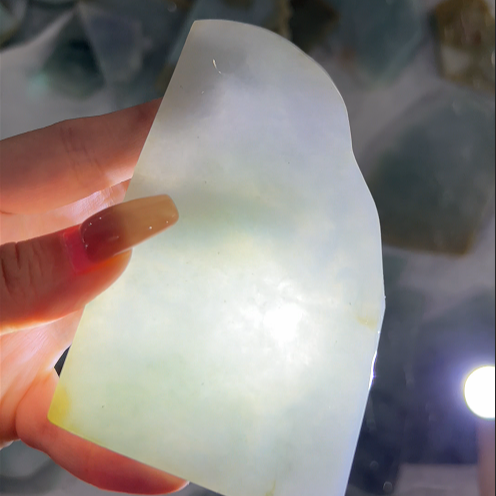
What Is Jadeite? A Mineralogical Introduction to the King of Green Gemstones
Jadeite is more than just a beautiful green stone—it is a gemological marvel with a rich geological history and intricate internal structure. Often referred to as the “King of Jade,” jadeite is prized for its translucency, vibrant coloration, and rarity. But what exactly is jadeite from a mineralogical standpoint?
🔬 A Mineral Group, Not Just a Stone
According to China’s national standard (GB/T 16553–2017), jadeite is not a single mineral but a rock composed predominantly of pyroxene group minerals, especially jadeite (NaAlSi₂O₆), and may include other sodium-rich or sodium-calcium-rich pyroxenes such as omphacite or aegirine-augite. Minor inclusions of amphibole, feldspar, and chromite are also commonly observed.
What makes jadeite distinct is its microcrystalline to cryptocrystalline texture—essentially, it’s a tightly packed polycrystalline aggregate formed under extremely high-pressure, low-temperature geological conditions. This texture is what gives jadeite its signature toughness and unique optical effects like “water head” (depth of translucency).
💎 The Structure Behind the Beauty
Mineralogically, jadeite belongs to the monoclinic pyroxene group. Its crystal lattice is made up of chains of silica tetrahedra, linked at the corners, with sodium and aluminum ions filling the gaps. This structure contributes to its:
-
Refractive Index: ~1.66 (measured using spot method)
-
Specific Gravity: ~3.32–3.33
-
Luster: Vitreous (glassy)
-
Transparency: Ranges from opaque to semi-transparent and translucent
When examined under magnification, fine-quality jadeite shows interlocking fibrous textures, creating a resilient matrix and a silky surface sheen.
🧠 Why This Matters
Understanding what jadeite truly is helps differentiate natural jadeite from treated or imitation stones. For serious collectors, connoisseurs, and spiritual wearers alike, this mineralogical background provides confidence in a stone’s authenticity and origin.
